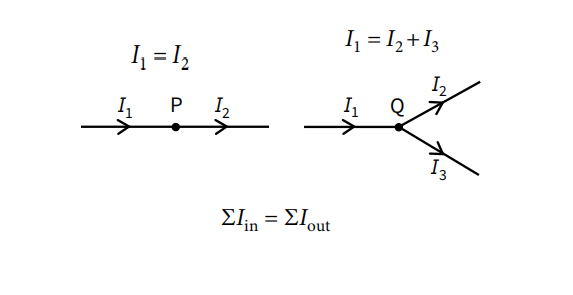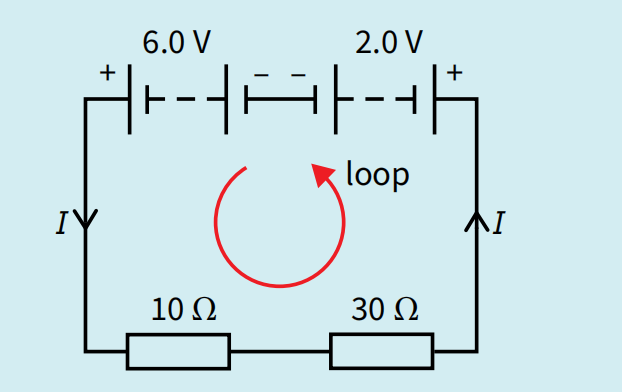Using Kirchoff's Laws to solve problems

$$\begin{align*}I_1 + I_2 &= I_3 \quad \text{(Equation 1)}\\\text{Loop 1:}\\\text{Sum of p.d} &= \text{Sum of emf}\\I_3(50) + I_1(10) &= 6\\10I_1 + 30I_3 &= 6 \quad \text{(Equation 2)}\\\text{Loop 2:}\\\text{Sum of p.d} &= \text{Sum of emf}\\I_3(30) &= 2\\I_3 &= \frac{2}{30} = 0.0667 \, \text{A}\\\text{Substitute } I_3 \text{ into Equation 2:}\\10I_1 + 30(0.0667) &= 6\\10I_1 + 2.00 &= 6\\10I_1 &= 4.00\\I_1 &= \frac{4}{10} = 0.4 A\\\text{From Equation 1:}\\I_2 &= I_3 - I_1\\I_2 &= 0.0667 - 0.400\\I_2 &= -0.333 A\\\text{Thus, } I_1 &= 0.4 \, \text{A}, \quad I_2 = -0.333 \, \text{A}, \quad I_3 = 0.0667 \, \text{A} \end{align*}$$

